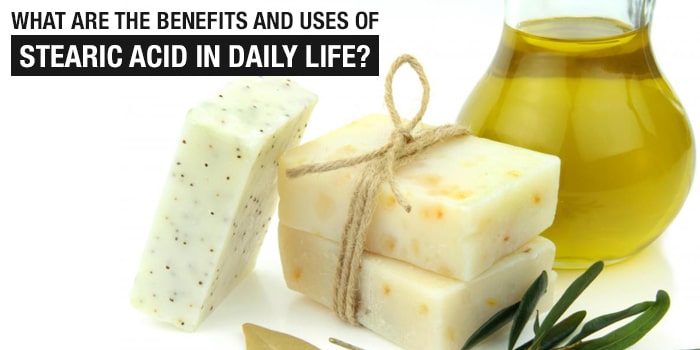- Home
- Effective use of stearic acid in our daily life
Effective use of stearic acid in our daily life
- Posted On: 2021-04-24 12:52:50
Stearic acid has an IUPAC name octadecanoic acid which is also a saturated fatty acid with an 18-carbon chain. While it is a waxy solid, its salts and esters are called stearates. Stearic acid is one of the most common saturated fatty acids found in nature following palmitic acid apart from its esters. The three molecules of stearic acid form a triglyceride which is called stearin. The saponification of triglycerides using hot water results in obtaining stearic acid from fats and oils. A mixture of stearic and palmitic acid results in commercial stearic acid.
We, at Bansal Trading Company, furnish our customers
with various personal care products that have stearic acid in them. We are also
the leading importer and exporter of stearic acid apart from their
manufacturing and distribution. The customer could contact us through our
website where details relating to the product and our company are easily
available. They could also search for any related product type or function on
our website whichever they require. The search column on our website lets
someone search with products according to the manufacturer, product function,
its application, or directly the product itself. We also provide an option of
reset while searching for products so that even though the customer selects any
wrong type, the selection could easily be changed.
Applications of Stearic Acid: Stearic acid exploits its bifunctional character in various applications. This happens mainly with a polar head group that can be attached to metal cations a non-polar chain that confers solubility in organic solvents. The use of such a combination could be seen as a surfactant and softening agent. Also, stearic acid undergoes the typical reaction of saturated carboxylic acids and esterification with a range of alcohols. The most noticeable reaction of carboxylic acids reaction with stearic acid is the one being reduced to stearic alcohols. Such a range of alcohols and reactions of saturated acids are used in a larger variety of manufacturers that may vary from simple to complex electronic devices.
As compared to vegetable fat, stearic acid is ampler in animal fat. The stearic acid content is 28-45% in the foods of cocoa butter and shea butter are the most important exceptions. To convert oleic into stearic acid commercially, fats high in oleic acid such as palm and soy may be hydrogenated. Stearic acid is produced from carbohydrates via the fatty acid synthesis machinery in terms of its biosynthesis. This production has a contributor, acetyl-CoA that contributes two-carbon building blocks.
Production of Personal Care Products: The main purpose of stearic acid is in the production of shampoos and shaving creams apart from soaps and cosmetics. The process of saponification is used in the production of soaps as stearic acid is not used directly in the production. Thus, soaps are made with saponification of triglycerides consisting of stearic acid esters. A pearly effect could be seen in shampoos, soaps, and other cosmetic products. This is possible through the usage of esters of stearic acid with ethylene glycol, glycol stearate, and glycol distearate.

Usage in Other Products: The main component of soap is sodium salt which has a soft texture but other salts are also useful for their lubricating properties. The reaction lithium hydroxide with stearic acid forms lithium stearate which is a white soft solid, which is an important component of grease. Other stearate salts of zinc, calcium, cadmium with lead are used to soften PVC, polyvinyl chloride. Along with castor oil, stearate acid is used for preparing softeners in textile sizing. This is mainly done by heating and mixing stearate acid with caustic potash or caustic soda. In the production of automobile tires, related salts are commonly used as release agents. Also, the powdered stearate acid is mixed in water and the suspension is brushed onto the surface to be parted after casting from a plaster piece mold or waste mold.
Stearate acids are used as a hardener in candies along with simple sugar or corn syrup. The reaction of stearate acid with zinc forms zinc stearate, which is used as a lubricant for playing cards (fanning powder) to ensure a smooth motion when fanning. During injection molding and pressing of ceramic powder, stearic acid forms a common lubricant. These stearate acids are often used to coat metal powders such as aluminum and iron in fireworks.

For Skincare Products: Stearate acids are often used in making skincare
products which include makeup and cosmetics as they help in removing dirt,
bacteria, and other substances from the surface of the skin. It protects the
skin surface against water loss by locking in the moisture and creates a waxy
protective barrier. It often helps in cleaning pores excessive oil and other
substances that may build up to form blackheads/whiteheads.
Company & Brands Reviews
Bharat Petroleum
-
- 1 Review
Bharat Petroleum Corporation Limited (BPCL) is an oil and gas company run by the government of India. Its headquartered in Mumbai Maharashtra. it is founded in 1950. Products given by the Bharat Petroleum Corporation limited are Petroleum, Natural Gas, LNG, Lubricants, and petrochemicals.
WD Hard Disk
-
- 1 Review
Western Digital Corporation is also known as Western Digital and WD, is an American data storage manufacturer company, design and manufactures computer hard disk drive for laptop and desktop across the country. The company also sells data technology products with storage device and cloud storage services. WD is one of the popular electronics industries in integrated circuit maker in US.
Samsung Mobile Phones
-
- 1 Review
Samsung Galaxy previously stylised as Samsung GALAXY is a series of computing and mobile computing devices that are designed, manufactured and marketed by Samsung Electronics. The company product line includes the Samsung Galaxy S series of high-end smartphones in several countries, the Samsung Galaxy Tab series of tablets, the Samsung Galaxy Note series of tablets and phablets with the added functionality of a stylus, the foldable Samsung Galaxy Z series, and smartwatches including the first version of the Samsung Galaxy Gear, with later versions dropping the Galaxy branding, until the release of the Samsung Galaxy Watch in 2018.
HDFC Bank Visa Credit Card
-
- 1 Review
HDFC Bank Ltd. is a popular Indian banking service provider and financial services company, headquartered in Mumbai, Maharashtra. The bank provides credit cards, consumer banking, banking, finance and insurance, investment banking, mortgage loans, private banking, private equity and wealth management. HDFC bank is one of the largest private sector banks in lender by assets and market capitalization as of March 2020. Several valuable customers are using HDFC Visa Credit Card for various purpose and share their personal views regarding the services, support and benefits. They also share the services feedback and complain online for better response in future.
Huawei Mobile Phones
-
- 1 Review
Huawei Mobile Phones is based on Chinese Multinational company Huawei Technologies Co. Pvt., provides telecommunications equipment for various types of electronics equipment and smartphones around the globe. The company headquartered in Shenzhen, Guangdong. The company initially produce and manufacturing phone switches, telecommunications networks, consulting services and communications devices for consumer markets. The company products and services are deployed in more than 170 countries. Several valuable customers are using electronics products and share their personal review and product feedback online which improve the product quality for the future.

